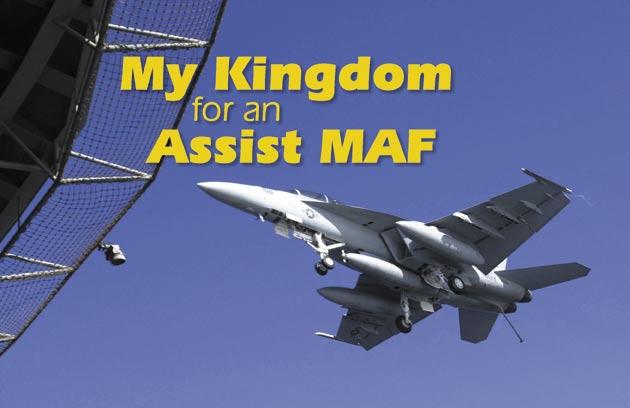
16 minute read
Good, Bad and Ugly
By AME2(AW) Scott Cutler
Two weeks into our first underway period of the year, things were going well for our AME shop. I only wish that we had paid more attention to all the things that could have gone wrong on a simple seat removal for inspection.
Advertisement
After the morning maintenance meeting, I was tasked to be the collateral duty QAR (CDQAR) and to oversee the removal of an FA-18F Super Hornet’s two ejection seats for 728-day inspections. Maintenance action forms (MAFs) were placed in work, and checkout procedure for the tools, individual material readiness list (IMRL), and maintenance requirement card (MRC) deck was followed before we went to the work. Our team of three arrived at the jet in the hangar bay, and the other two AMEs began to set up the area around the aircraft while I climbed on top of the aircraft to get in the cockpit.
One of the steps to remove the aft ejection seat requires access to the upper catapult-mounting bolt. While the seat removal can be accomplished without first removing the starboard cockpit-video-recordingsystem (CVRS) box, it is easier and often less painful (literally) to remove it. The potential for pain exists as a maintainer holds the socket wrench on the upper catapultmounting bolt. It sometimes slips off the bolt head and
Navy photo by AN Maebel Tinoko
subsequently slams the maintainer’s hand into the starboard CVRS. In order to prevent injury to my hand, I decided to remove the recorder and place it aft of the canopy actuator, and on top of the number one fuel cell access panel located behind the aft cockpit seat.
Two days before this maintenance evolution, our LPO told us after the morning maintenance meeting that we (as a shop) were not to touch any aircraft components that did not belong to us. The CVRS box belongs to the AT shop. Before beginning the seat removal, I thought to myself, “This job is so easy. What harm could it do to remove the CVRS box myself?” I rationalized this problem and reassured myself that I could remove it in far less time than it would take to call the AT shop for help. Little did I know I would soon learn the hard way what harm would occur.
After removing both ejection seats and placing them in the seat cage, I inventoried the IMRL no longer needed for the job and returned it to the shop. Before walking away from the aircraft, I told one of the other AMEs, a collateral duty inspector (CDI), to sweep the cockpit area for tools and hardware. I arrived in the shop, put the IMRL away, grabbed some water and sat down for a few minutes. Just as I was getting comfortable the AME CDI whom I had asked to sweep the cockpit
Damaged area

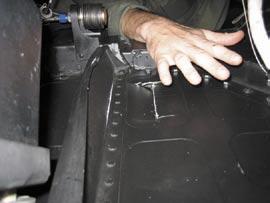
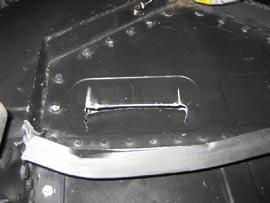
The canopy rail and areas around the canopy need to be free of objects. This damage shows why.
walked into my shop and relayed the sentence every maintainer fears, “We’ve got a problem.” After wracking my brain to think about what could possibly be wrong, and since we had already taken the seats out of the jet and carefully placed them in the seat cage, I asked, “What is it?”
The CDI replied, “You know that starboard recorder box?” Instantly, I felt like someone had punched me in the stomach, because I knew exactly what had happened.
I rushed to the hangar bay, climbed on top of the aircraft and looked at the spot where I had placed the recorder. The No. 1 fuel-cell access panel had a gash in it the same length of the CVRS box, and the support rib running across it was bent out of shape. The CDI had overlooked the recorder I placed on the access panel behind the aft seat and had closed the canopy on it. When the canopy was closed, it pinched the CVRS box between the canopy glass and the No. 1 fuel-cell access panel.
Through this mishap I learned some valuable lessons that hopefully will prevent recurrence of this or similar incidents. First, if an aircraft component does not belong to your work center, do not touch it—no matter how small the job seems. I should have cut an assist MAF and had the appropriate work center remove its piece of gear. Effective communication is key, and I should have told the other AMEs about the recorder. Had I told them, someone might have reminded me to reinstall it after the seat removal was done.
We can’t afford to lose focus or attention to detail in this high-risk business. AMEs always preach to other squadron personnel to thoroughly check the canopy area before closing it to make sure nothing is in its path. On this day, my lapse of judgment allowed a fellow AME to close the canopy on an object that I had placed in the canopy’s path. As the CDQAR, I should have known that doing maintenance by the book meant not skipping any steps and seeking assistance from other work centers, when needed.
Because of my seemingly minor decision to remove the CVRS box, it cost the Navy $2,000 to replace a fuel-cell panel. In addition to the large expense, this incident had a deeper cost to our squadron, my shop, and me. Our professional pride was hurt, and you can’t put a price tag on that.
Petty Officer Cutler works in the AME shop at VFA-102.
PMA202: Aircrew Systems for Today, Tomorrow and the Future
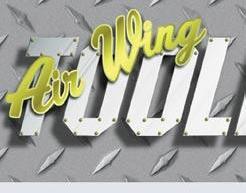
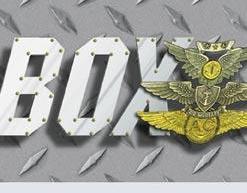
By Jack Stewart and Dan Steber
The business card for Capt. CJ Jaynes, PMA202 program manager, says, “Service to the Fleet,” and a visit with her team revealed it’s more than just a motto.
This NavAir program office provides the Navy and Marine Corps with cost-wise and safe aircrew systems. They make sure personal equipment does what it’s supposed to do when aviators or maintainers need it—lives depend on it.
Capt. Jaynes sums up her department’s work with a simple statement: “If you’re going to change anything on the human, see 202 first.”
A big challenge for her team is their work on a wide variety of programs, including aircraft systems and aircrew, survival electronics, chemical-biological defense, and fleet-support systems.
Continually improving aviation gear, PMA202 focuses on getting users what they need. They not only rely on feedback reports but also visit with and talk to the fleet to ensure the right products are developed. This firsthand look, or “boots on the ground” effort, allows for valuable dialog and a better understanding of the fleet’s needs.
Cdr. Tom Wheaton, who works the class desk, explained, “Warfighters look for tools to get the job done, and they want them now. But now is difficult to do. Developing, acquiring, fielding, and supporting take time. Quality takes time, and the gear needs to work the first time, every time.”
Here’s an overview of several programs and projects that PMA202 currently is working on:
Aircraft-mounted systems: Tracking aircraftmishap trends, using reported incidents and information from the Naval Safety Center, is the foundation for many of our projects, according to Gary King of the aircraft mounted-systems team. This mishap data inspired development of the mobile aircrew restraint system (MARS), which protects crew members in the cabin during a hard landing or mishap. The system uses a modified inertial reel originally developed for crashworthy seats and integrated to the airframe and aircrew vest.
Another mishap trend indicated the need for a new crash-protection system, the common crash-resistant troop-seat system (CCRTSS), which PMA202 qualified in 2004. It is the best crash-attenuating passenger seat in the Navy today and is being fielded in all new production UH-1Y aircraft.
The premier ejection seat in use today is the Navy aircrew common ejection seat (NACES). To meet the needs of a new mission, the NACES modular design can be upgraded without a total redesign to the seat. This capability supports a wider aircrew population, including female pilots, and ensures safe ejection for both the smaller and larger aircrew. Phase II of its development included a new digital sequencer that controls critical seat functions to improve seat performance and
reduce seat cost. Phase III is planned for 2009 and will improve high-speed ejection-seat performance through the NACES stability improvement program (SIP). This is done with a new drogue stabilization system. NACES upgrades will replace older escape systems in various USMC FA-18s.
PMA202 is developing an alternative oxygen solution for the E-2D, Advanced Hawkeye, with installation of an onboard oxygen-generating system (OBOGS), instead of LOX bottles. The transition to OBOGS across all naval aircraft eventually will eliminate LOX infrastructure and reduce costs.
“People often can’t appreciate the work it takes to get a product properly integrated to the aircraft and out the door,” King said; for example, seat cushions that meet the requirements for extended missions.
King pointed out a Hornet mishap where an unauthorized cushion had been installed. He added, “You can’t simply install a cushion in the seat. As a sub-component of an ejection seat, these seats are complex systems that are sensitive to weight, center of gravity, or structural changes. The same analysis is being done to safely integrate the joint helmet-mounted cueing system (JHMCS) with current ejection seats.
POC: Gary King, 301-757-6985
Aircrew-mounted systems: An ongoing in-service program improves gear that aviators and maintainers currently use. “Fleet support teams,” according to Dex Hansard, “work with the fleet users to identify deficiencies.” With this information, the teams obtain funding and get the fixes in place.
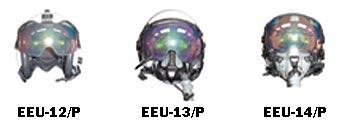
All future aviators will fight with the next generation of helmet, the joint helmet-mounted cueing system, which interfaces with the aircraft’s computers, weapons, and sensor hardware. It currently is flying in the Hornet. JHMCS boasts a man-mounted, ejection-compatible, helmet-display system that optically projects aircraft, weapons and target information on the helmet visor.
The flight-deck cranial and flight helmet are being redesigned. “If you include the other services,” Hansard says, “27 different configurations of flight helmets are in use, with three display modules. The intent is to develop a common helmet and cranial, with two variations: one for rotary aircraft and one for fixed wing.” Night-vision devices (NVDs) and noise-protection requirements are being integrated into the flight-deck cranial. The next generation of NVDs in development significantly will improve night visual acuity and the field of view. The JHMCS night-vision cueing and display (NVCD) will integrate image-intensifier capabilities into the existing day-capable system for night operations.
The proliferation of battlefield lasers requires protection against hostile wavelengths. Improved laser spectacles and the joint aircrew laser eye-protection visor (JALEPV) will provide day and limited night protection for tactical and rotary aircrew.
A specific PMA202 success story is the multi-climate protection (MCP) system. MCP is a multi-layered clothing ensemble made with state-of-the-art fabrics that insulate without being bulky or heavy. The program office expedited cold-weather ensembles for Marines in Afghanistan.
POC: Dex Hansard, 301-757-6972
Survival electronics and equipment: The PRC-149A and the URT-140 radio beacon replace legacy radios not compatible with the SARSAT system. New radios offer enhanced search-and-rescue (SAR) location and will operate on all three internationally recognized SAR frequencies.
PMA202 is developing a helicopter egress system for passengers (HESP). This system integrates inflatable flotation with an underwater breathing air bottle to make it easier for troops to escape from a sinking aircraft. HESP is being developed in cooperation with the Marine Corps Combat Development Command (MCCDC).
Ricardo Springs, program manager, also pointed out the state-of-the-art survival item (SOASI) program, which “fast tracks” the process to qualify items for use. SOASI items are usually commercial items currently available to recreational outdoorsmen, such as flashlights, knives, signals, and some high-tech clothing.
POC: Ricardo Springs, 301-757-6955
Chemical-biological defense: This division works very closely with joint programs, which are important because the Navy has many unique requirements that must be factored into DoD programs. This division provides and services three types of equipment: individual protection, detection and decontamination.
Current programs include the joint protective aircrew ensemble (JPACE); joint-service aircrew mask (JSAM), which protects aircrew; joint chemical-warfare
agent detection, for point detecting and identifying chemical agents; joint-service personnel/ skin decontamination system(JSPDS); and joint material decontamination system (JMDS) to clean contaminated personnel and equipment. Future programs include standoff detection systems, which will detect and identify nerve, blister, and bloodagent vapors at significant distances.
“We hope the gear won’t have to be used,” said team member David Coughlin, “but we have to be ready to use it when needed.” He pointed out that 21st century realities really bring the threat to focus.
The seriousness of CBR gear led to issuing a NATOPS for chem-bio. Team member Sam Frazier said of the manual, “It’s available on our website and covers individuals, aircraft and organizations.”
GySgt. Forrest Sibley, fleet liaison, pointed out a specific area where maintainers can help themselves. “Check the gear and size new arrivals ahead of time to build a database so equipment is ready to go.” He added that this equipment could be tracked with SEATS.
POC: Joe Marquis, Sam Frazier, David Coughlin, and GySgt. Forest Sibley, (301) 757-6969
Fleet support: NavAir’s fleet-support team works with maintainers and aircrew. Six teams provide engineering and logistics support for new and modified equipment, and help investigate mishaps.
Cdr. Joe Essex says his team is ready to “respond to problems with any system, provide training, and find a fix for any deficiency.” These people are the link between their developmental team and the fleet as NavAir products hit the fleet. Cdr. Essex adds, “We want to visit every squadron, every base, every year.” Their role is to take care of the fleet user, or as he says, “Adapting gear to the mission to meet changing mission.” The six fleet-support teams are: • Aviation life-support systems: survival vests, antiexposure suits, torso harnesses, life preservers, helmets, oxygen masks, flight suits, boots, radio/beacons, and parachutes. • Aircrew-escape systems: ejection seats, crashworthy seats, fixed aircraft seating, and ejection-seat parachutes. • Aircrew-oxygen systems: regulators and related support equipment. • Night-vision systems: night-vision goggles, operator and intermediate-level test sets. • FAILSAFE: This program systematically introduces new or modified aviation life-support systems (ALSS) to fleet operators and maintainers—specifically targeting purpose, proper use, sizing, modifications, and maintenance issues. • Mishap investigations: Examine life-support and survival gear involved in aircraft mishaps. This team assists the Naval Safety Center in determining the possible causes of a mishap and possible causes of pilot, aircrew and passenger injuries.
POC: Cdr. Joe Essex, 301-757-6976
Challenges abound in PMA202 to support the fleet. Capt. Jaynes said, “We need to be responsive and have a measured success. We measure success by cost, schedule and performance, and the ability to meet all aspects stated in the business plan.”
Questions often arise about the length of delivery schedules, and what can be done to expedite a fix or implement a product for an urgent requirement. NavAir has the ability to purchase existing gear or COTS (commercial off-the-shelf) products. The acquisition process is accelerated, but, as always, the NavAir engineers examine the product and must approve it.
While it may be easy to be critical of how long it takes to provide some equipment and programs, it’s important to understand that NavAir only approves gear that meet certain standards. “When changing gear or equipment, PMA202 can’t respond without doing it the right way. We take a step-by-step process to make sure the solution is right, and we ‘lean’ the process,” said Capt. Jaynes. As each program gets approved for development, milestones are set to track progress. While this entire effort may take from months to several years, the goal is to deliver a product that works when needed.
For more information about PMA202, visit their website at https://home.navair.navy.mil/pma202/.
By AT3 Paul Golden
It was nearing the end of my shift when a call came into the avionics shop that aircraft 503 needed an IFF receiver-transmitter (R/T) on the fly. I was in the shop at the time and wanted to respond as quickly as possible. It had been a busy day, and we still were fairly early into the deployment, my first one. My thought at the time was to be as productive and expeditious as possible, so I grabbed my float coat, cranial and tools.
After removing an R/T from another aircraft in the hangar, I double-timed to the flight deck. Although new to the carrier’s flight deck, I was qualified to go up alone. I entered the flight deck from behind the island like I had been taught and headed directly for the aircraft. As I rounded an E-2 that was next to our bird, I saw the normal people: flight deck chief, plane captain, safety, and the troubleshooters. I looked to see where I needed to go and saw our shop’s more experienced troubleshooter waiting for the part. This is where it got ugly.
Before arriving at my current squadron, I mostly had FA-18 experience, and there are two major differences in the location of the exhaust. The exhaust of the Hornet is all the way aft; the EA-6B’s exhaust is roughly twothirds of the way down the fuselage. Also, the EA-6B tailpipes focus exhaust down toward the ground, unlike the FA-18, which has tailpipes pointing exhaust directly behind the aircraft.
The key factor in my incident was that I did not take time to assess the situation. Any one with vision can see the difference in the location of the exhaust. My downfall was that I relied on prior habit patterns without taking the time to look around. The area in which the IFF R/T has to go is in the “birdcage,” located between the two exhausts. There isn’t too much I remember after going directly for the birdcage, except the troubleshooter pointing to the exhaust, which was no more than 3 feet to my right at head level.
From the blast of the exhaust, I was lifted off of my feet and blown aft and down. I landed on my side, still

Navy photo by PH3 Lance Mayhew Jr.
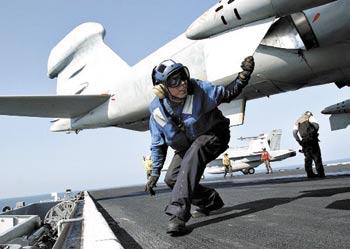
holding on to the R/T. The next thing I saw I’ll never forget: my cranial with my glasses still inside it flying overboard, more than 20 feet from the deck edge. I landed with my boots up against the scupper, my hand ripped from the non-skid, and my ears on fire from being directly behind the exhaust without any hearing protection. The line shack LPO and an airman quickly grabbed and led me below decks to medical.
Once there, I received four stitches to my left hand and took some time to calm down. I was very lucky only to have needed stitches. It easily could have been me going overboard, along with my cranial, not to mention the possibility of losing the equipment I was carrying.
All in all, I believe my accident easily could have been avoided if I had spent more time studying my surroundings. I also should have maintained situational awareness. Just because we face an ever-present push to perform in a timely manner, it is not an excuse to develop a lax attitude. No one wants to see an accident occur because of poor decisions.





